Views: 55
I’m in the mood for what I’ll call my favorites on a Sunday. Playing my favorite rocking tunes. But you can play any type of music that you wish. I want to start with Mott the Hoople featuring Ian Hunter.
![]()

Views: 55
I’m in the mood for what I’ll call my favorites on a Sunday. Playing my favorite rocking tunes. But you can play any type of music that you wish. I want to start with Mott the Hoople featuring Ian Hunter.
![]()
Views: 84
Bringing back old shows or spinning them off in some way is all the rage nowadays! (regardless of whether or not it’s a good idea).
What TV show would you like to see come back one day? (with me personally, it would be JAG).
![]()

Views: 50
One of CBS’ longest-running scripted shows, NCIS: Los Angeles, will be coming to an end after 322 episodes. Its current 14th season will be the show’s last, with the series finale set for May 14, airing on the network and streaming live and on demand on Paramount+.
The NCIS spinoff, starring LL Cool J and Chris O’Donnell, is tied as the fifth longest-running CBS primetime scripted series ever, only behind Gunsmoke, Lassie, CSI and Criminal Minds. Among the four, the two shows that have aired in the last 50 years, CSI and Criminal Minds, both have since been revived, which bodes well for NCIS: Los Angeles‘ future.
Additionally, NCIS: Los Angeles is a rare long-running procedural drama to have had its original leads, LL Cool J and O’Donnell, stay on for the entire run. Both have spoken publicly about their commitment to the series, which hit the 300 episode milestone last May, and their fellow cast members.
According to sources, the cast and crew of NCIS: Los Angeles are being told today about the series coming to an end. A cancellation of a long-running drama with big-name leads filming in L.A. should not come as a shock given the big price tag involved, especially at a time when networks across the board are looking to cut their spending. Still, I hear the cancellation news came as a surprise to many associated with the show as it follows the strong ratings for the three-way crossover with mothership NCIS and latest offshoot NCIS: Hawai’i.
“This NCIS Crossover was a huge success!!”, LL Cool J just wrote on Instagram. “After 14 seasons, this is the perfect time to end @ncisla on top of our game!!!”
I hear the timing of the decision stems from the network’s desire to allow showrunner R. Scott Gemmill and his team to craft a series finale, which they will have to jump on right away to get it ready for May. In a statement (you can read it in full later in the story), Gemmill promised fans an ending that “is both satisfying and does justice to these beloved characters.”
NCIS: Los Angeles was the first spinoff from NCIS, now in its 20th season. It was followed by NCIS: New Orleans, which ran for seven seasons, and NCIS: Hawai’i, now in its second season.
Boosted by being part of the NCIS franchise, NCIS: Los Angeles set a record for the quickest off-network syndication sale in fall 2009 when it was nabbed by USA Network for a massive $2.2M-$2.3M an episode just 6-7 weeks into its run. The series has remained a money maker for producer CBS Studios with distribution in more than 200 countries.

“For 14 seasons, NCIS: Los Angeles has been a stalwart of our lineup with characters who were a joy to watch,” said Amy Reisenbach, president of CBS Entertainment. “From day one, the cast, producers and crew were amazing network/studio partners, and their teamwork, talent and spirit vividly came through on the screen. We are so grateful for the collaboration and remarkable run of these treasured members of our CBS family, and plan to give them the big sendoff they and their fans deserve.”
Unlike the mothership NCIS series, which stayed in its original Tuesday time slot for almost two decades until recently relocating to Monday, NCIS: Los Angeles has been a classic utility player for CBS, moving seven times in 14 seasons and helping reestablish a beachfront for the network with scripted series on Sunday.
The series, created by Shane Brennan, is averaging 6.06 million viewers and is the top scripted program in its Sunday 10 PM slot. Season to date, new episodes have amassed more than 591 million potential social media impressions and Americans have watched over 4.2 billion minutes (through Jan. 15) of the current season.
“I want to thank both the network and studio for their partnership and support over the years; Shane Brennan for giving us such a great playground; and my partners John P. Kousakis, Frank Military, Kyle Harimoto and Andrew Bartels for their tireless efforts and collaboration episode after episode,” said NCIS: Los Angeles executive producer and showrunner Gemmill. “Our crew has grown to be a true family, and their hard work and dedication has been fundamental to our success year after year. My deepest gratitude to the cast members, who have brought our characters to life with their impassioned performances – thank you for your talent, professionalism and continuous enthusiasm. And to our loyal viewers who loved our characters and followed their journeys, thank you. We look forward to delivering an end to the series that is both satisfying and does justice to these beloved characters.”
My take:
Truth be told, when Hetty started getting the short stick, that’s when I started disliking this show. Plus, all the bad writing that happened to the team afterwards just made me more angry.
I’m not that bummed out. Just disappointed that everyone deserved so much better from these last few years. Now we have to hope that everyone (including Hetty) can somehow get a happy ending. (and yes, the perfect ending I have in mind is Hetty being home for Callen’s wedding)
![]()

Views: 45
I want to thank the Culinary Ginger for this.
Fresh flavors with a hint of lemon and garlic, this Shrimp Bruschetta with Cherry Tomatoes takes minutes to make. Serve warm or room temperature. I love to serve this seafood topping on grilled bread. Usually enjoyed as an appetizer, I could eat this as a meal with the bread, mix with pasta or go surf and turf with grilled chicken.

For me, this is the best bruschetta recipe (also called crostini) because I never say no to any shrimp dish. This is a cooked version of a classic tomato and basil bruschetta topping.

Which bread is best for bruschetta?
I pick whichever large, unsliced bread looks good that day. For this I used a Pugliese bread ( Pulgliese is a region in the heel of Italy’s boot). It’s a large loaf, very much like ciabatta with characteristic holes.

A small Italian lesson for you (and it is small)
Did you know that in Italian, any word with ‘sch’ in it is pronounced as a ‘k’? I know this because I have an Italian last name with sch in it (my husband is Sicilian). So that would make this dish pronounced broo-skeh-tuh.
Anyway, back to the recipe. The shrimp can be made ahead, but not too far ahead. I wouldn’t make it any sooner than the day before you want to serve it.
YIELD: 10

Fresh shrimp is cooked with garlic and cherry tomatoes, basil and chives served on grilled bread.
10
1 pieceAmount Per ServingCalories110Total Fat5gSaturated Fat1gTrans Fat0gUnsaturated Fat4gCholesterol23mgSodium351mgCarbohydrates12gFiber1gProtein5g
This nutrition calculation is provided by Nutronix that is only a guideline and not intended for any particular diet.
![]()
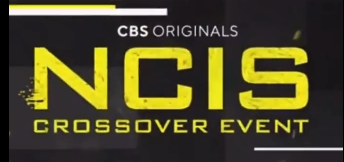
Views: 26
Yes, the heavily promoted 3 episode NCIS crossover aired this Monday. It had lots of callbacks, some were to old school LA, friendly sparring (IMO, which made everyone look like middle schoolers), and 1 huge surprise.
The 3rd episode ‘A Long Time Coming’, found a neat way to give fans a reasurring update on 1 particular LA team member who everyone has been waiting on pins and needles to hear more about because it’s been a long time since she’s been seen.
I present to you, the part about this whole crossover that I consider to be a miracle of sorts:
![]()

Views: 4
Yesterday was what my wife called Orthodox Christmas. Her mother was Ukrainian Orthodox. So we always left the decorations up. So today they all go down. I took some close ups, so let’s take one last look.Winter snowflakes is next.
I hope you enjoy looking at these pictures I take. For me it’s showing off my wife’s decorating talents.
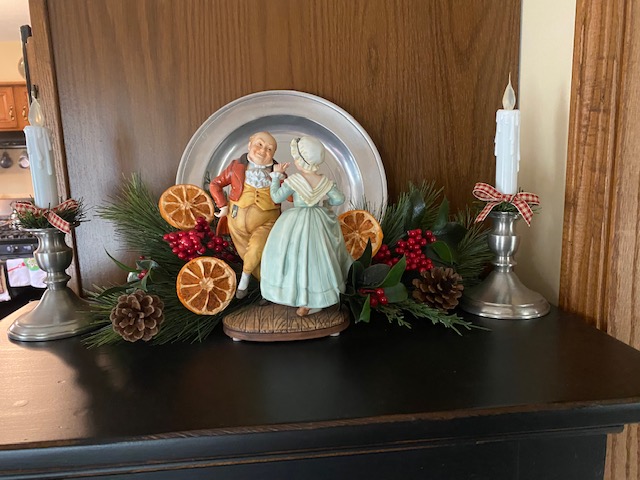

Loving the Dickens Village

![]()

Views: 41
So what pots and pans do you have? OK so it’s called cookware. Our cookware is mostly Calphalon. We also have some ALL-Clad and Old Revere Ware. ALL-Clad is the most expensive and some say the best.
All our Cookware is made in the USA. My favorite are two pans that are not USA made. A line called Green Pan. And also all the Cookware is non stick. Why Green Pan?
Green Pan is very light and inexpensive. Only had the two pans for about three months, but so far they’re scratch resistant. I use the eight inch one everyday. Now my wife likes her Calphalon and Revere Ware. She’s not overly crazy with the ALL Clad. Now we get to price and location.
I ran into a chef friend last week at Kohl’s. His wife was just getting ready to buy a 10 piece Calphalon non stick Cookware set. $249.00. I told her TJ Max had a 10 piece ALL-Clad for the same price. That set MSRP is $400.00. They didn’t even say bye.
TJ Max is the place for cookware deals. All firsts also. Our 10piece Calphalon cost us $130.00.
![]()

Views: 15
Mary Yoder’s is in Middlefield, Ohio. About thirty minutes from Cleveland. Sixty minutes from Akron or Youngstown.
Mary Yoder’s is a Amish restaurant my wife and I frequent often. Actually going there for dinner Saturday and I’ll be getting several loafs of bread. Also I’m giving you a link to their store if anyone would wish to order from there.
https://www.maryyodersamishkitchen.com/shop-mary-yoders-amish-kitchen/
I’ve had their bread, pies, pastry, and jelly and jams. For my west coast fans, I’ll look for something closer.
1 tbsp. butter
1 cup chopped onion
1 cup sliced carrot
1/2 cup chopped green pepper
1 lb. ground beef
2 cups tomato juice
1 cup diced potatoes
1 1/2 teaspoon salt
1 tsp. seasoned salt
1/2 tsp. pepper
1/3 cup flour
4 cups milk
Melt butter into saucepan, brown meat; add onion and cook until transparent. Stir in remaining ingredients except flour and milk. Cover and cook over low heat until vegetables are tender. Combine flour with one cup of milk. Stir into soup mixture. Boil. Add remaining milk and heat, stirring frequently. Do not boil after adding remaining milk.
This recipe can be adapted to your family’s taste. Celery can be substituted for the green pepper if you wish.
Filling:
1 can crushed pineapple
2/3 cup sugar
2 tbsp. corn starch
Dough:
2/3 cup warm milk
4 tsp. sugar
1 cake yeast
3 beaten egg yolks
3 cups flour
1/2 lb. margarine
Preheat oven to 350o. Combine crushed pineapple, sugar and cornstarch in pan. Cook until thick. Cool. Cut margarine into flour as for pie dough; crumble yeast into milk and add sugar. Let stand until mixture bubbles, add to flour mixture. Mix in beaten egg yolks. Knead dough lightly and divide into two parts. Roll out one half of dough on floured board and fit in a 9 x 13 inch pan. Spread pineapple mixture on top. Roll out second piece of dough and place on top of filling. Let stand for one hour in warm place. Bake in 350o oven for 30 minutes. At once put on thin confectioners sugar frostiing. Other fillings such as blueberry and raspberry may be used instead of pineapple.
1/2 cup lukewarm water
2 pkgs yeast
1 1/2 cup lukewarm milk
1/4 cup sugar
2 teaspoons salt
1 cup flour, plus
1/4 cup shortening
1 egg beaten
1/2 cup sugar
2 tablespoons cinnamon
Dissolve yeast in lukewarm water. Soak for five minutes. Combine lukewarm milk, 1/4 cup sugar and salt. Add 1 cup flour, shortening and beaten egg. Continue to add flour until you get a soft dough. Let rise for one hour. Punch down and let rise again. Mix 1/2 cup sugar and cinnamon. roll dough into rectangle about 1/2 inch thick. Sprinkle with sugar and cinnamon mixture and roll like a jelly roll. Let rise again and bake at 350o for about 30 minutes.
1/2 cup butter
1/4 cup powdered sugar
1 cup sufted flour
Preheat oven to 325o. Mix all ingredients.. Pat into a 9inch square pan. Bake at 325o for 15 minutes.
Filling:
1 cup sugar
2 tablespooons flour
1/2 teaspoon baking powder
juice of one large lemon
2 eggs, slightly beaten
Combine all ingredients. Pour over baked layer. Bake at 325o for 25 minutes. Cool. Sprinkle with powdered sugar. Cut into squares.
1 chicken – preferably a 4 pound hen
1 teaspoon salt
Water to cover
4 medium-sized potatoes, sliced
2 tablespoons parsley
For Dumpling dough:
2 cups flour
1/2 teaspoon salt
2 eggs
2-3 tablespoons water
Cut chicken into serving pieces and cook until tender. Season with salt. When chicken is almost soft, add the potatoes.
To make dumplings, make a well in the flour and add the eggs and salt. Work together into a stiff dough, adding the water or milk if too dry. Roll out the dough as thin as possible (1/8 inch) and cut in 1 inch squares with a knife or pastry wheel. Drop into the boiling broth, which should be sufficient to cover the chicken. Add the chopped parsley. Some flour can be added to the broth to make it like gravy. Serves 6-8.
![]()

Views: 18
We’ve all had that 1 or 2 favorite song or songs from movies that we like. Feel free to discuss below!
![]()

Views: 9
The last weekend of the year. So do you have plans for this weekend? The MC clan does. Tomorrow the Croatian and Italian side will have a dinner. A late Christmas party. Every year my niece gives us the White House ornament. Usually it features a past president.
Saturday getting together with a cousin to celebrate the New Year. An early dinner. And those are our plans. Let us know yours if any. Look forward to seeing all next year.
![]()

Views: 7
Sorry it took so long to get this up. I want to wish all a Merry Christmas. And for those who don’t celebrate well that’s fine and please stay safe.



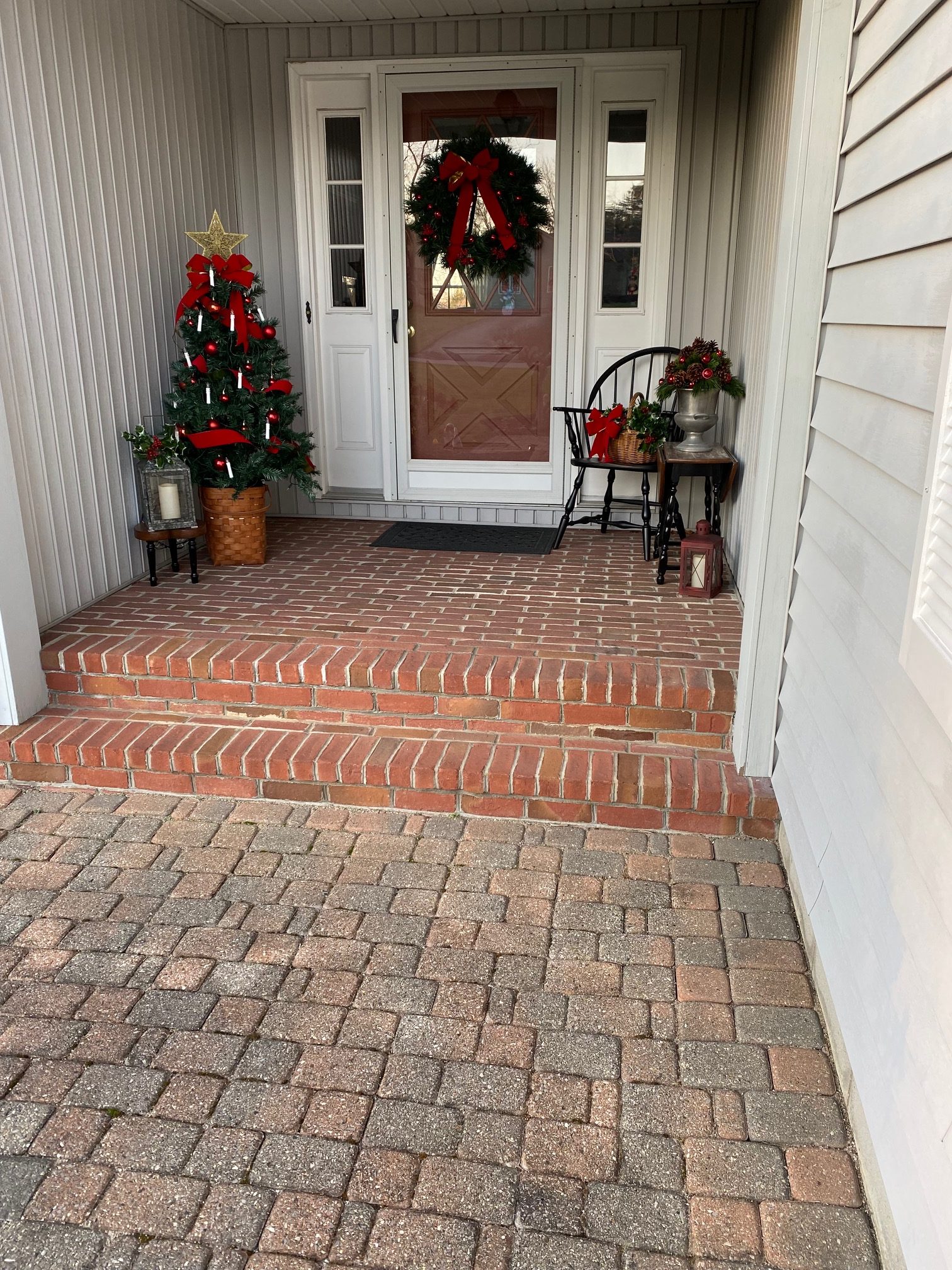

![]()
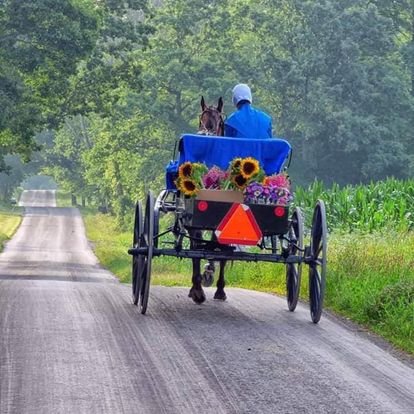
Views: 10
The Amish tour. Welcome to The Simple Life.
Simple Life Amish Tour Company
We welcome you to join us on our Amish Adventure into the Simple Life of the Old World Order Amish Community.

Each tour begins in the heart of Amish Country of New Wilmington, Pa located just 60 miles North of Pittsburgh, 15 minutes from the Grove City Outlets and Just five minutes from the town of Volant, Pa. We meet at an Amish Store called Byler’s Quilts and Crafts located at 435 Quilt Shop Lane, Volant, Pa 16156 There you will meet Susan, your personal tour guide. Step into Susan’s vehicle and let her lead you through a backroads tour of our Amish villages. You will be transported into another world as we explore the Amish Countryside. This is a private, non commercialized scenic back roads tour that takes you off the beaten path. Susan will teach you about the Amish lifestyle as we drive past horse and buggies, homes, dairy farms and even an Amish schoolhouse. You never know what you will see along these backroads! Visit Amish farms, greenhouses, an Amish bakery, grocery store. Watch Amish men build furniture and plow their fields with horse and plow!
You will be amazed at the knowledge, friendliness and warmth of this tour and tour guides. You will be able to meet and speak with our Amish friends and discover the beauty of the Amish culture and lifestyle.
Tours are approximately 2 hours long. Each tour is a non-commercialized private tour made by appointment. You can book online or call us.
This tour is perfect for individuals, families, couples and even groups.
For Larger Groups: Try the TASTE AND TOUR AMISH COUNTRY TOUR. Let Susan come as a step on tour guide, or lead your group on a two hour tour that includes and Amish meal at a local restaurant.
Are you ready for your Simple Life Tour? Please call us @ 724-923-9730 or book now online.
Photo by: Jim Fisher

There will be as many stops as we can fit in, on our Simple Life tour. First stop may be an Amish produce and bakery stand. Meet Andy and his family and tempt your taste buds with their delicious wares! The next stop is an Amish Grocery store, where you will meet the Byler Family. Located in the basement of the Byler’s home, this grocery store is lit with a gas lamp. Purchase old fashioned sodas kept cold in an the Byler’s “Ice box” and wait until you see the antique adding machine! You will be able to purchase local honey, fresh tapped Maple Syrup, Homemade noodles, cheeses a variety of Amish jams and jellies and homemade candy. Our third stop is Cornerstone Furniture where you will get to see how and Amish furniture shop works with no electricity! Watch the Amish men build furniture and meet Rudy, who will show you his hand built tables and chairs. Our fourth stop is an Amish Quilt shop. Meet Sam and Lizzie Byler who own New Wilmington’s only Amish Quilt Shop filled with beautiful Amish handmade quilts, rocking chairs, and many other Amish made items from our local Old World Order Amish community.















Photo Credit: Jim Fisher
![]()

Views: 8
Death may be inevitable, but it’s still painfully tragic when it seems to come too soon, as was the case with these iconic musicians. Some were victims of accidents while others died due to health complications and addictive behaviors. Regardless, each and every one of these artists made a huge contribution to their respective musical genres. Here are iconic musicians who left behind incomplete legacies and many broken hearts.
Something different from Ms. Carpenter.
![]()
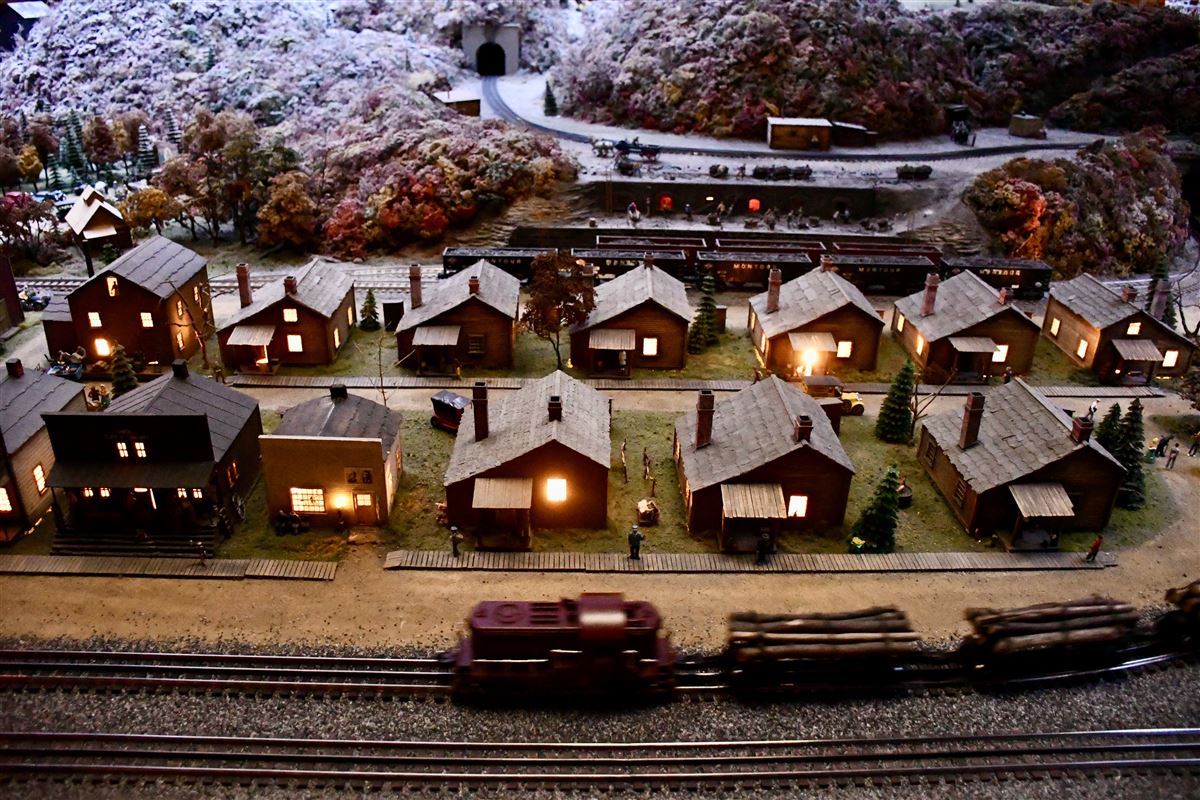
Views: 4
PITTSBURGH —
Americans love to cleave to cultural traditions that have stood the test of time — especially ones that tell stories of the people who formed their communities, stories that reflect the craftsmanship, sacrifice and hard work of those who came before us.
When inventor and master tinkerer Joshua Lionel Cowen designed an electric fan operated by dry cells — and then, using the same motor that drove the fan, built a miniature railroad car — he began a business and a movement that has enthralled millions of people young and old. Hobbyists not only bought trains and track, but also often created elaborate homemade displays enjoyed by family and friends over the Christmas holidays.
One of the people Cowen inspired was Charles Bowdish, a young World War I veteran and cabinetmaker who lived in Brookville, Pa. He made his first miniature display at Christmas 1919, and to his surprise and delight, 400 people showed up at his home to see it.
Word quickly spread of the Bowdish display beyond Jefferson County, and the young artisan decided early on to keep track of the visitors to his home. In 1953 — the year before he moved his display to the Buhl Planetarium — the family counted 314,874 visitors from every state and 41 foreign countries over 34 years.
It was a tradition Bowdish continued into the 1980s at the Buhl Planetarium, where the line to enter often wrapped around the iconic North Side. Each year, Bowdish spent months painstakingly expanding the display and crafting new scenes that celebrated the lives and livelihoods of Western Pennsylvanians and our industrial, cultural and agricultural impact on the country and the world from the 1880s to the 1930s.
Today, that tradition is in the capable hands of 29-year-old Nikki Wilhelm, who until a few years ago had never picked up a tiny paint brush — or been to half the places depicted in the Miniature Railroad display at the Carnegie Science Center, where most of the Bowdish materials were relocated in the 1990s.
Ms. Wilhelm, a Lancaster native, is the manager of the Miniature Railroad & Village. She has embraced the craft and the history and the storytelling in the same way Bowdish did 100 years ago.
Ms. Wilhelm explains that she started working at the Carnegie Science Center as a part-time program presenter: “It was an entry level, part-time job. I was in grad school at Duquesne studying public history, and I had no background with model trains or modeling or anything like that.”
Her boss at the time, curator Patty Everly who had been with the Carnegie Science Center for three decades, taught her everything she knows, beginning with miniature modeling. Her first piece was the interior of the iconic Strip District Primanti Brothers restaurant.
It was a craft Ms. Wilhelm admits came naturally to her, to her surprise.
Her office is located right outside the 83-foot-long, 30-foot-wide O-scale railroad exhibit. Walking inside is an astonishing step into the past, where the magic of Bowdish’s Jefferson County basement lives on 103 years later, as she often uses common household items to recreate history for the exhibit.
Ms. Wilhelm picks up a red covered bridge from a shelf and turns it upside down. “I’ll show you something cool that Charlie Bowdish built. You see this bridge? Well, it was made from a Milk-Bone box,” she said, pointing to the label from the dog bone company inside the bridge.
“You really just have to let your imagination run wild because you wouldn’t believe the things you can use to make something: the row houses that we have from the Liverpool streets in Manchester, the intricate detail work on the porches — that’s just made from angel hair pasta,” she explained. “The trees are made from dried wild, hydrangea flowers.”
Ms. Wilhelm’s desk is filled with historical documents for research, a magnifying light, branches from the hydrangea bushes used to make the trees every year — all surrounded by three walls of shelves filled with people, homes, buildings, street lights, trains and paint for a craft that requires year-round care.
The popularity of model railroading has stood the test of time in part because hobbyists each bring a different skill set to the craft, which in turn helps develop others: Artisans love building the model scenery; history buffs enjoy researching and recreating places long gone; engineering types enjoy designing the tracks; and techies love the technological advances in electronics, wiring and the ability to run your train from an app on your smart phone.
Ms. Wilhelm says the models for the exhibit are selected by the leadership team at the Science Center. “We always try to pick something that’s historically, culturally or architecturally significant to not just Pittsburgh but the region. We have scenes from as far north as Brookville. We have Titusville and the Drake oil well, and of course Altoona,” she said.
“We try to diversify it; it’s easy to get stuff with city buildings because there’s so much exciting stuff going on in the city, but we try to branch out — like when we did Cement City a few years ago, that was from Donora,” she said.
What she loves most about the exhibit is watching the expressions on people’s faces, especially older people who appreciate the research required to capture a scene accurately. “One thing that’s really helpful is that our staff, basically everyone was a history major, so we put a lot of effort into making sure everything looks as it did,” she said.
One of her favorite creations was the Kaufmann’s Department store windows. “I just looked up old window display photos in the newspaper archives,” she said of her inspiration to get it perfect.
“Once you’ve worked with the miniature railroad for a while, you kind of get the vibe of the exhibit itself. I mean, many people have worked on it over the years, but it still really has kept its integrity. It looks just like it did when Charlie Bowdish was working on it. So we try to use all those same techniques that have been around since he started it over 100 years ago. Everything that Patty Everly has taught me, I now teach the new people. So we just keep the tradition going,” she said.
Royce Beacom is one of the 17 volunteers available for curious children, parents and grandparents to explain each display and detail to visitors. At home, he says, he does modeling for himself and for his grandchildren: “I have five grandsons between the ages of three and ten who love the train; I am trying to pass that tradition on.”
It’s easy to worry the next generation won’t be interested in carrying forward the baton of tradition — the stories and crafts and ideas that bridge the past, present and future of the places we call home. Ms. Wilhelm is a great example of someone who embodies that spirit, carrying forward a magical tradition that began with a kid from Brookville over 100 years ago.
When Bowdish was asked, in one of his final interviews before passing in 1988, why he continued the exacting, painstaking work year after year, he said: “Everyone regardless of their status in life, reaches out towards life’s ultimate achievement — happiness … privileges, money and possessions are useless unless they make a man happy. To those who have been bored and sickened by the monotony of work in offices, sales, fields and factories, where the only evidence of a day’s work is a headache, nothing to exhibit to friends, nothing to view with pride as an example of skill or handiwork — to those people I say ‘You should have a hobby.’”
Forty years later, Ms. Wilhelm’s answer was pretty similar: “When you have a hobby, any hobby, whatever it may be, you need to have the love and passion to really bring that extra spark, the extra ingredient to bring that fulfillment. When you have that, that is a happiness you earn and that is the most meaningful kind.”
![]()
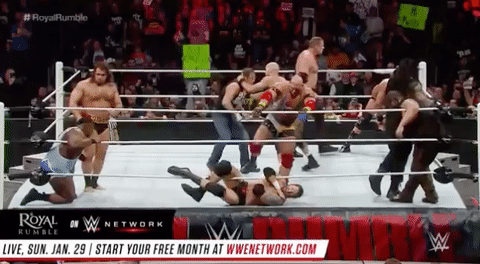
Views: 5
Free for all Friday. Play what ever your heart desires. I myself love the Classic Rock. All you folks out there play what you wish. I probably will mix it up.
![]()

Views: 1
An Oakdale family is praising their teenage son for helping free his father earlier this month after being trapped underneath the truck they were working on.
Matthew Wilkinson said despite getting home late on what should have been a normal Monday night, he couldn’t put off working on the brakes on his work truck. When his teenage son came out to check on him, he enlisted his help, he said. Working on the vehicle, he said, was something they’d done many times before. This time, however, the rotor was stuck.
“I couldn’t get a good angle, so I slid my body underneath the truck and was hitting it,” he said. “The second it popped off, the truck fell. I know it rolled forward because I saw it roll forward and it fell right on top of me. All I could think about was the breath coming out of me. I was just squished. I couldn’t talk. I couldn’t yell.”
The family’s home security camera captured the terrifying moment. The accident left Wilkinson with a punctured lung, broken ribs and a separated shoulder, KCRA reported. But while he was in the hospital, he said he couldn’t figure out how he had managed to free himself.
“All this time in the hospital, I’m trying to figure out how did I get out from under the truck,” he said. It was then, he said, he remembered the surveillance cameras.
“I called my kid and had him look at them look at the surveillance camera and they realized that he had lifted the truck enough for me to roll out,” he said.
At 15, Dalin Wilkinson is a freshman at Oakdale High School. He regularly helps his dad out with work on the vehicle.
“It just dropped right on him. I was scared. I heard him make a noise like his soul was leaving his body. It was crazy,” Dalin Wilkinson said. “I just ran over and tried as hard as I could to get it up enough to get him out.”
It was enough.
“My son is my hero. He saved my life,” said his father.
![]()
Views: 23
Well here at the MC home it was time for our Holiday decorations. So we had to take ( actually Mrs. MC ) down all the Harvest decorations.


Today starts the second day of putting up the Holiday Decorations. I’ll just give ya a sneak peak. More to come today or tomorrow. Is it to early to say Merry Christmas?
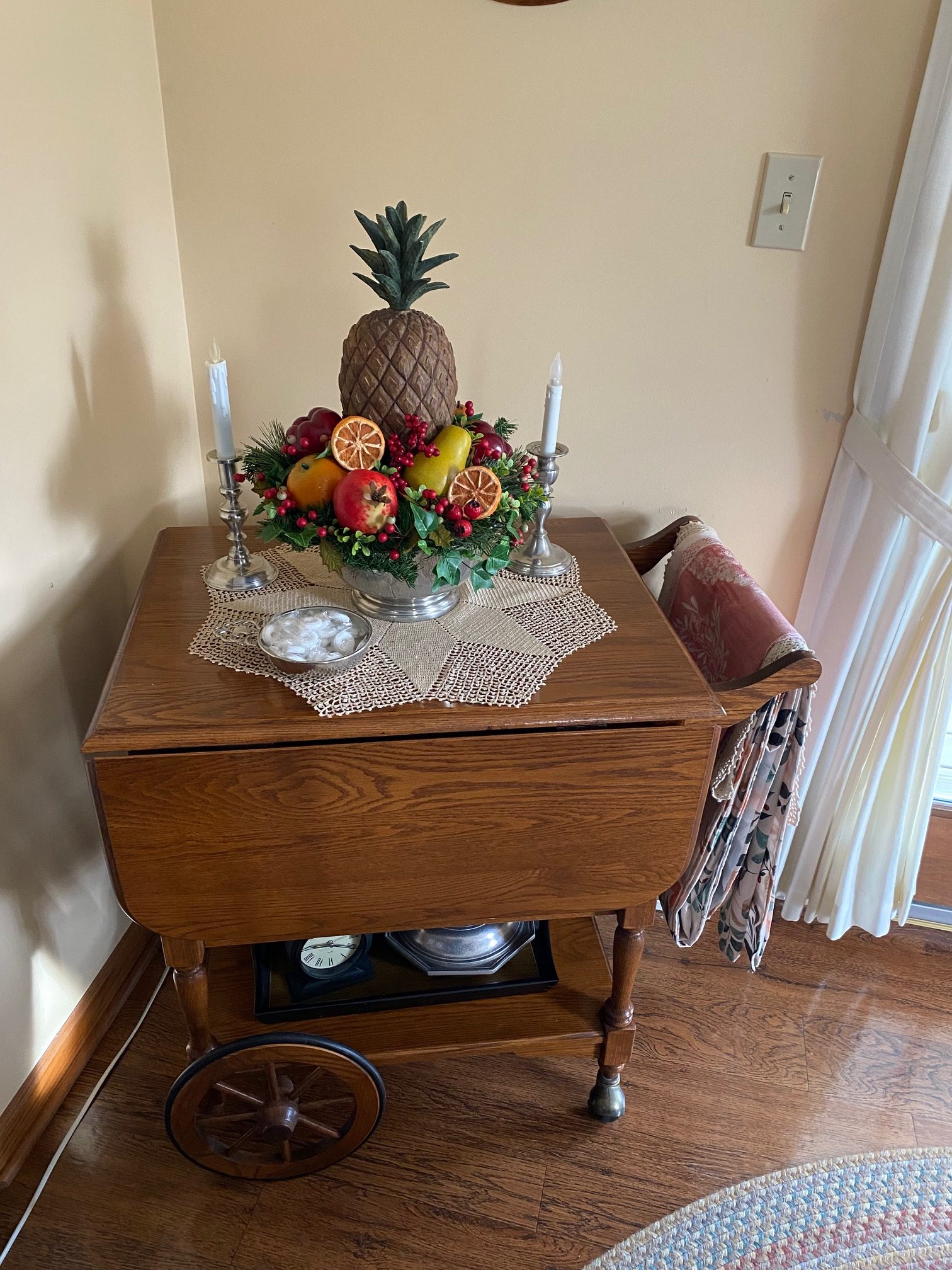
![]()

Views: 6
Full episode details for the 3 part NCIS verse crossover was released yesterday, along with a few photos. And I’m just gonna say it bluntly: It all looks like a mess.
“Too Many Cooks” – NCIS agents from Washington, D.C., L.A. and Hawai’i, all in D.C. to attend the retirement party of a beloved Federal Law Enforcement Training Center (FLETC) professor, find themselves investigating his shocking suicide, on the CBS Original series NCIS, Monday, Jan. 2 (8:00-9:00 PM, ET/PT) on the CBS Television Network and available to stream live and on demand on Paramount+*. The episode is part one of a three-episode NCISverse crossover event with NCIS: LOS ANGELES and NCIS: HAWAI’I.
“Deep Fake” – Tennant, Jimmy Palmer (Brian Dietzen) and Sam Hanna (LL COOL J) find themselves captured by a woman claiming to be a CIA agent demanding intel from the team. Also, Jesse, Ernie, Whistler and Alden Parker (Gary Cole) learn about an asset that arrived in Hawai’i who could be connected to several overseas assassinations, on the CBS Original series NCIS: HAWAI’I, Monday, Jan. 2 (9:00-10:00 PM, ET/PT) on the CBS Television Network, and available to stream live and on demand on Paramount+.* NCIS stars Gary Cole, Brian Dietzen and NCIS: LOS ANGELES stars Chris O’Donnell and LL COOL J guest star in the episode, which is part two of a three-episode crossover event with NCIS and NCIS: LOS ANGELES.
“A Long Time Coming” – Agents Rountree and Fatima are ambushed while searching for Kilbride, who has been MIA, and they learn that every member of the team has a hefty bounty on their head. The NCIS team must save Agent Rountree and find Kilbride while every cartel, hitman, gang and psychopath hunts them down, on the CBS Original series NCIS: LOS ANGELES, Monday, Jan. 2 (10:00-11:00 PM, ET/PT) on the CBS Television Network, and available to stream live and on demand on Paramount+.* NCIS stars Gary Cole, Wilmer Valderrama and NCIS: HAWAI’I stars Vanessa Lachey and Yasmine Al-Bustami guest star in the episode, which is the conclusion to the three-episode crossover event with NCIS and NCIS: HAWAI’I.
Firstly, all 3 episodes don’t really look connected to each other if you just go by what their details say.
Secondly, the 2nd and 3rd episodes sound a bit too much like overkill. Like, 3 kidnapped agents in the 2nd part, and then you get 2 ambushed agents in the 3rd part and every bad guy out there chases the 3 teams while they try to find them? Bit much, don’t ya think? (not to mention, it all sounds like it’ll be rushed and probably poorly executed.)
Third: I’d be hard pressed to find a few someones who actually watch all 3 of these shows who won’t be hopelessly lost trying to understand who the other people on the other teams are.
And fourth: The only person who kept NCIS LA from turning into the sheer dumpster fire it is now won’t even be around to help them. And how is anyone supposed to know who the legendary leader of LA’s team is if she’s not even gonna be around for this?! What’s the point of trying to get to know her team without them then?!
If this whole thing was going to be about rescuing Hetty, then it would’ve sounded more appealing. But instead, we get slight disjointment in the episodes, multiple kidnapped agents and being chased by multiple hitmen, and it will be a miracle if it all doesn’t end up looking rushed or badly thought out. ‘Nice’ to see the low standards when it comes to the writers and fans.
![]()
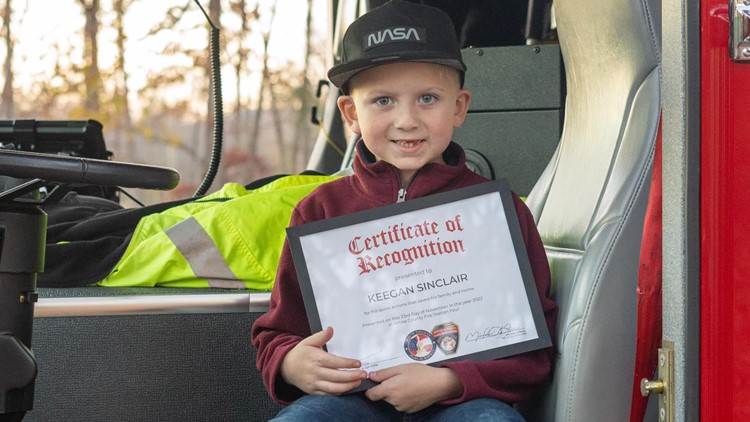
Views: 2
![]()

Views: 8
There’s very fascinating science behind understanding the depreciation of cars. When a new car is bought, its tendency, almost always, is to decrease in value over time. This is called depreciation, and different cars depreciate at different rates, depending on any number of factors, things as simple as quality, brand, and model, to things as complex as the economy, the market, how many cars sold, its vogue popularity, how many were made, and so on. There are a lot of variables that go into the depreciation rate of a car. These variables are so vastly different that it’s possible for a car to not only never actually depreciate, but instead escalate in value, sometimes drastically, over the years. These are collectible cars, the kind that age, and can be sold at auction for millions.
Updated June 2022: While some new cars may seem like they offer great features, performance, and overall value for the money, their depreciation rates often tell a much different story. We’ve updated this list with even more models proven to have some of the highest five-year depreciation rates.
It’s a mystery, though, because, on the other hand, some cars will lose almost all their value over the course of many years, then with the flip of a switch they rise in value, becoming collector cars. This is why investment in cars can be a risky game to play, but a very rewarding one as well. Some cars hit a baseline and will hold value at that baseline for decades, but some cars seem to have absolutely no bottom at all, plummeting in value year after year. That subject is what this article is all about. The kinds of cars that won’t hold any value, prices crashing drastically.
Here’s a look at 20 cars that will probably be worthless in 5 years.
The Cadillac brand of cars, from their SUVs to their sedans to their performance cars and sports cars, are all subject to depreciation, the kind of depreciation that makes these cars worthless after 5 years. Of all the cars on this list, Cadillac is one of the ones that face the steepest depreciation values in regard to American cars. They aren’t bad cars, either, so if you’re looking for a good second-hand car, you’ll be able to find an older Cadillac in good shape at quite a good steal, especially compared to their price new.
The Volkswagen Passat is one of the most common and prolific Volkswagen models you can buy. It’s marketed for the average car buyer, family, or single person. Naturally, that lends to its tendency to depreciate a lot – very steeply, actually, even though it’s a great, mid-class sedan. It’s safe, it’s reliable, it’s practical, and it’s reasonably priced, even new. You can buy them second-hand for quite cheap, and they’ll still have a lot of longevity for the price.
The Buick Enclave is a car that you should probably never buy new. It’s not a very good car, to begin with, sold new with any number of price increases to cover not only the cost of manufacturing, but also the costs to cover the other facets of the Buick company and give them profit, plus the costs to cover the dealerships and all the car salesmen who sell them. But as soon as you buy one used, all that is stripped away, leaving you with the actual value of the car. Which isn’t a lot, considering they aren’t good SUVs.
Chrysler, while attempting to be a luxury line of cars, really isn’t quite up to par. The company can’t quite get the gumption to actually build their cars with genuine quality, so while they may have features, and look modern, nice, and luxurious, the fact of the matter is that they aren’t built to last, therefore they don’t hold their value.
They don’t hold it at all, depreciating as fast as drivers are able to pay it down. Buying them used may seem like a steal, but beware of the maintenance costs…
The Volkswagen Jetta is basically the twin sister of the Passat. It’s a little smaller and starts at a little lower of a price point than the Passat, but it’s one of VW’s most popular models. This, of course, means that they don’t resell for very much money at all. The depreciation is just as steep as the Passat, so after a few years, you can buy them for a lot less than the selling point new.
A 3-Series BMW is a great car to buy. It really is. It’s sporty, fast, has a great engine, great handling, it’s also practical, and somewhat of a reliable car, too. So you’ll be safe buying one new because it’s a really solid car. But, due to depreciation, you can buy one aftermarket second-hand for significantly less. Yet, you won’t get significantly less quality, because of how well they’re made, and due to the steep depreciation rates. It just makes sense to buy one of these used.
The great new frontier in the car industry is electric. Governments are trying to eliminate combustion engines entirely, even trying to outlaw them, which means that the era of gasoline is quickly coming to an end. For better or worse. But that means that the electric industry is going to begin advancing in leaps and bounds, leaving behind the pioneers in the dust. Soon enough, Tesla cars will seem like dinosaurs, and they won’t hold any of their value. They will depreciate, and who knows if they’ll even have a floor, but there’s no denying the new Model X Plaid is blisteringly fast!
Almost all cars made and manufactured in Germany are subject to some of the steepest depreciation rates of all cars. The best thing about the German cars, though, is that they are made with integrity, no corners cut, and they aren’t cheaply manufactured, unlike some American models that depreciate only because they immediately become unreliable. So if you want to buy an Audi, it’s pretty easy to find one for less than half its selling value. If you find a well-maintained one, that’s good, but if not, you’ll be paying a lot in repairs.
Buying a BMW new means that you make a lot of money each year, and can afford a pretty expensive car payment each month, and you only care about having the nicest thing possible, no matter how good of a value it is (or isn’t). Buying a BMW used means that you’re a pretty smart person because you can have a model that’s only a couple of years older, almost the same quality, yet less than half the price of the new one. This means you can have that suave, luxurious, powerful, German-engineered sedan for a lot smaller monthly payment than the new one.
The biggest factor leading to the depreciation rates of the Fiat 500L is more than likely due to the fact that it isn’t desirable. It’s ugly, lumpy, has no track record for being reliable (yet, at least) and it’s a bad sign when it doesn’t sell well new because it’s so ugly. Within the first year, it depreciated significantly. Now, at some point in the far future, we could see this car maybe spiking back up again, being a funky, retro, vintage car. But, then again, it seems like the kind of car that may need to just be forgotten in the annals of time.
The Cadillac CTS is a car that will plummet in value over the next five years, and it’s almost guaranteed that this car will be worth well below half its selling price very, very soon.
All Cadillacs are subject to very steep depreciation rates, due to the fact that they don’t really have longevity, or much allure once they’re no longer new. A CTS is a pretty fast car, especially the CTS-V, and it’s possible for it to be yours on a budget, as long as you do the shopping right and pick a good one.
Minivans never do all that well in the used car market, not when it comes to retaining their value, anyway. The Kia Sedona has been on a trend of pretty steep depreciation for all of its past models, so it’s fairly safe to say that the newest models will be subject to the same thing. The Sedona will however be replaced by the Kia Carnival, and only time will tell if they both face the same demise.
There are just so many different minivans in the market, once they’re second hand they just don’t sell for much. If you’re looking for a minivan, and you’ve got a big family with not-so-big of a budget, second-hand is the way to go.
One aspect that drastically influences a car’s depreciation rate is reliability, and unfortunately, all Land Rover products are prone to break way too often, so it’s no surprise to see the Evoque end up on this list. The Evoque is a compact SUV meant for those who crave parking on sidewalks more than conquering rough terrain – a pavement princess if you will. Buying one of these gorgeous SUVs today isn’t cheap either coming in at a base price of $44,000, and that’s excluding any options.
As we move through this list, you’ll see a common pattern start to form: German luxury cars. While they may be exquisite to be the passenger or even the driver, they’re prone to losing value fast over a short period. These large Audi-built limousines are seriously underrated, especially if you have your hands on an S8, but buying a new one is as good as flushing money down the drain. Well, that’s of course assuming you like spending your wisely, but if you’re really rolling in the cash, go ahead and buy this one, we’ll take it off the used lot in a few years
There’s nothing quite like realizing you can have a six-figure car for the price of a Toyota Corolla. It has an electrically satisfying, palpable excitement. Or, it’s the dreaded, twisting, dark knot of anxiety in your stomach knowing that your car is depreciating faster than you can even pay it down. Which, if you buy a Mercedes new, that is a serious concern and worry.
Mercedes sedans will be virtually worthless within five years of their being manufactured, especially compared to their selling price. Unless it’s a unique model, then it might increase in value, like the E63 Wagon.
It’s an unfortunate sight to see such amazing cars as the BMW 7-Series subject to such precipitous depreciation values. These cars are extraordinarily well-made, they are quite reliable, they are luxurious, good to drive, and powerful.
Yet, they fall prey to depreciation like few others. While it’s unfortunate for some, for others, it’s their key to owning one of the greatest second-hand cars that money can buy. With the right knowledge, it’s easy to buy a reliable, well-maintained, almost new BMW for a mere fraction of the selling price.
Electric cars have aggressive depreciation values, worse than a lot of gasoline cars on the market right now. The Nissan Leaf is just one of these electric cars, and while it’s one of the most beloved electric car models out there, it doesn’t insulate it from depreciation. The market for second-hand electric vehicles isn’t very high, which means that you’ll find these cheap.
The issues of battery life and battery longevity are really something that becomes a big problem fairly soon after manufacture. Pair that with the soon-to-come advancements in the industry, and you’ve got two nails in the coffin.
You’ll find a lot of cars pretty similar to this one in this list. There’s just nothing that really is valuable about a Lincoln MKZ because there’s nothing special about it. Even if it’s made nicely, and even if it’s reliable and safe, that doesn’t mean it’s safe from depreciation. There are a lot of cars like this in the market, and so as soon as they’re not new anymore they lose any scraps of value they had new. Things only get worse if the MKZ proves to be unreliable or poorly made.
Mercedes-Benz, one of the leading car manufacturers in the world, makes and sells some of the greatest, best performing, and most luxurious sedans, sports cars, and SUVs that you can buy, especially if they have an AMG badge. Since they are a luxury brand, they can get away with selling their cars for high prices new. High quality = high price. But they won’t keep that high price for long, as Mercedes by and large falls prey to some of the worst depreciation rates a car can face. If you’re dreaming of a Merc, just wait a couple of years and that dream will be within reach.
To end off this list, we have the worst of the bunch, a superfast, striking, Italian sedan produced by Maserati, the Quattroporte. If you happen to find one of these on the used market with relatively low mileage and clean service history, it might not be a bad idea to pick one up, especially considering it had a screeching Ferrari-derived V8 under its hood. But ownership is where the problems begin as Maserati couldn’t fully figure out what to do with the electronics, and if something were to go wrong with your Ferrari engine… that’d be a costly matter to attend to.
Marnus Moolman is a young aspiring automotive writer from South Africa who is making a name for himself, despite his young age. Currently, he is studying to obtain a Bachelor’s Degree in Accounting to pursue his lifetime dream of running
![]()